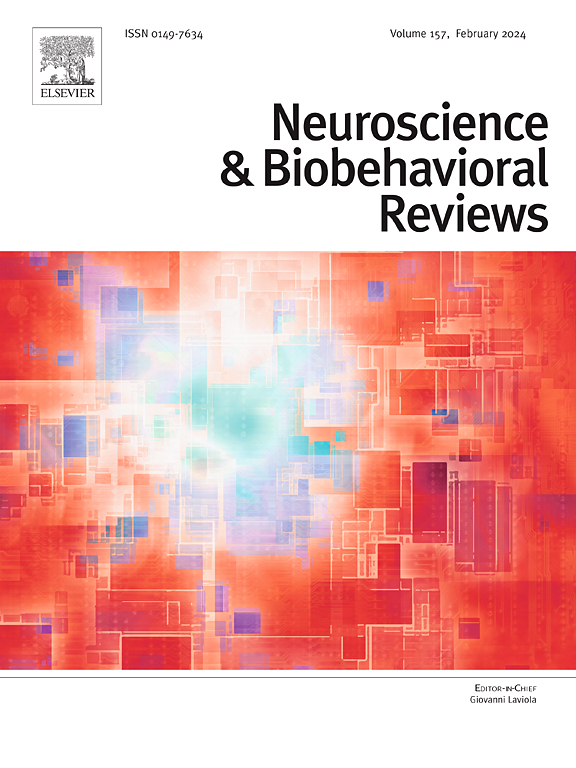测量从婴儿期到儿童期的内感受:范围回顾
IF 7.5
1区 医学
Q1 BEHAVIORAL SCIENCES
引用次数: 0
摘要
内感受是一种感知、理解和响应身体内部信号的能力。尽管它很重要,但我们对早期发展阶段的内感受能力的了解仍然有限。内感受性发展的延迟或非典型模式可以作为潜在的发展性精神病理的早期指标。因此,评估婴儿期和幼儿期的内感受对于提高我们对典型和非典型发育途径的理解至关重要。目的:本综述总结了从婴儿期到儿童期关于内感受的现有证据,并确定了评估神经性儿童人群中内感受的最常用方法。通过对三个科学数据库的有力搜索,进行了文献综述。结果663篇文献中有24篇符合纳入标准。婴儿时期最常用的方法是注视时间范式和基于大脑的内隐测量,如心脏诱发电位(HEP)。研究人员主要使用儿童版本的心脏追踪任务(HTT),用于学龄前儿童。调查学龄儿童内感受能力的主要方法包括HTTs和自我报告法。只有一项研究使用功能磁共振成像来检查儿童时期的身心联系,而两项研究依赖于父母的报告。本文综述了文献中过去和现在测量内感受的方法。它强调了现有方法的优势和局限性,并提出了建议,以加强我们对早期人类发展中的内感受的理解。本文章由计算机程序翻译,如有差异,请以英文原文为准。
Measuring interoception from infancy to childhood: A scoping review
Background
Interoception is the ability to perceive, understand, and respond to internal bodily signals. Despite its importance, our knowledge of interoceptive abilities in the early stages of development remains limited. Delays or atypical patterns in interoceptive development may serve as early indicators of potential developmental psychopathology. Thus, assessing interoception in infancy and early childhood is essential for advancing our understanding of both typical and atypical developmental pathways.
Objective
This scoping review summarises existing evidence regarding interoception from infancy to childhood and identifies the most common methods for assessing interoception in neurotypical pediatric populations.
Design
A literature review was performed through a robust search of three scientific databases.
Results
Among 663 studies, 24 articles met the inclusion criteria. The most commonly used methods in infancy were looking-time paradigms and brain-based implicit measures, such as Heart-Evoked Potentials (HEP). Researchers predominantly used child-adapted versions of Heart Tracking Tasks (HTT) for preschool-aged children. The primary methods for investigating interoceptive abilities among school-aged children included HTTs and self-report measures. Only one study used fMRI to examine mind-body connections in childhood, while two relied on parent reports.
Conclusions
This review offers a comprehensive overview of past and current methods for measuring interoception in the literature. It highlights the strengths and limitations of existing methodologies and presents recommendations to enhance our understanding of interoception in early human development.
求助全文
通过发布文献求助,成功后即可免费获取论文全文。
去求助
来源期刊
CiteScore
14.20
自引率
3.70%
发文量
466
审稿时长
6 months
期刊介绍:
The official journal of the International Behavioral Neuroscience Society publishes original and significant review articles that explore the intersection between neuroscience and the study of psychological processes and behavior. The journal also welcomes articles that primarily focus on psychological processes and behavior, as long as they have relevance to one or more areas of neuroscience.

 求助内容:
求助内容: 应助结果提醒方式:
应助结果提醒方式:


